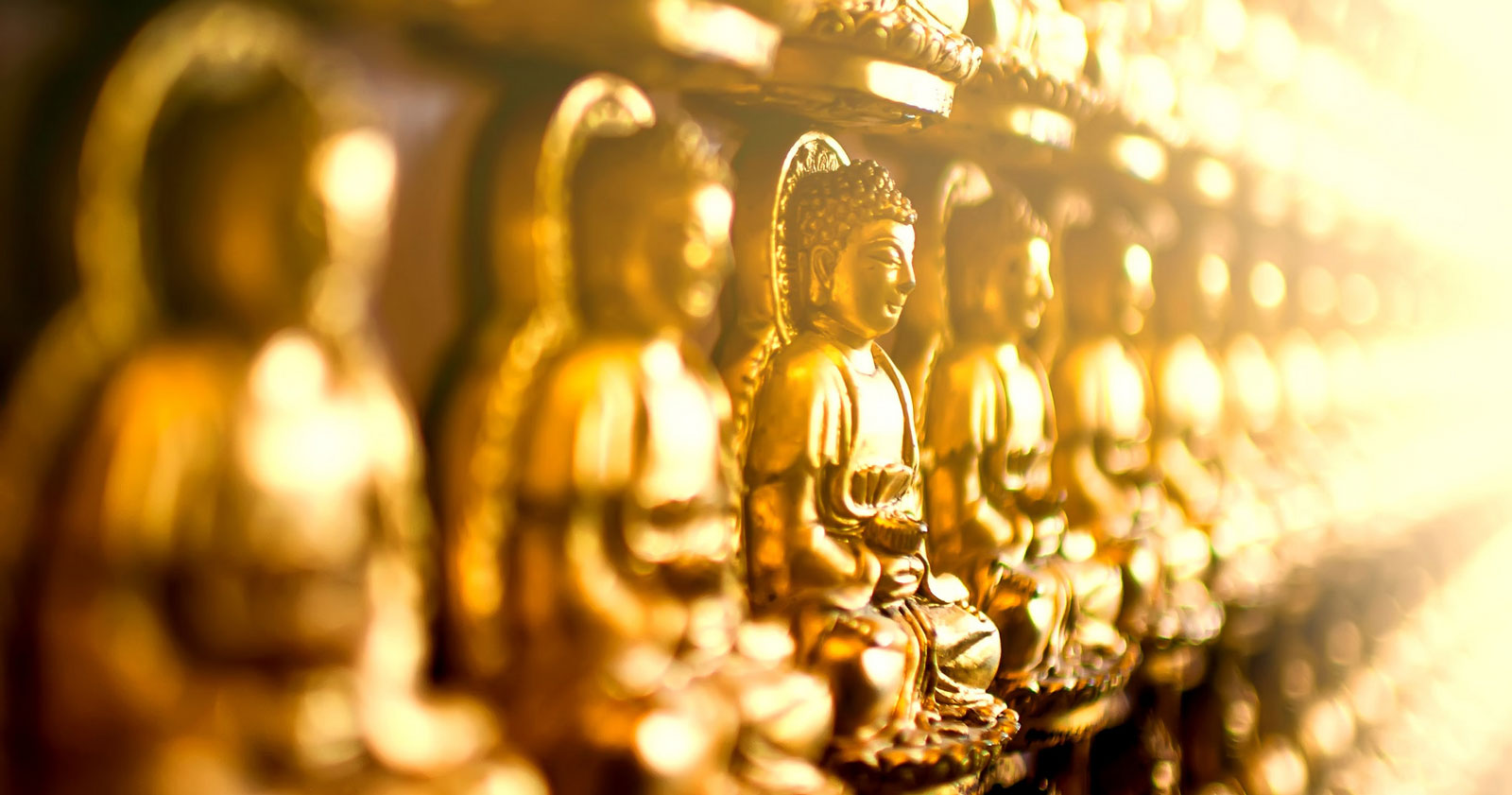Sutta Study: The Failings of the World
The Lokavipatti Sutta teaches us how to be unshakeable amid life’s ups and downs. The post Sutta Study: The Failings of the World appeared first on Tricycle: The Buddhist Review.

This article is part of Trike Daily’s Sutta Study series, led by Insight meditation teacher Peter Doobinin. The suttas, found in the Pali Canon, comprise the discourses the historical Buddha gave during his 45 years of teaching. Rather than philosophical tracts, the suttas are a map for dharma practice. In this series, we’ll focus on the practical application of the teachings in our day-to-day lives.
In the Lokavipatti Sutta (AN 8.6), the Buddha offers a teaching that guides us in our efforts to develop equanimity. Equanimity is steadiness of mind, unshakeableness, imperturbability. Theravada monk and Pali translator Thanissaro Bhikkhu defines equanimity as “an attitude of even-mindedness in the face of every sort of experience, regardless of whether pleasure and pain are present . . .” When we have equanimity, we remain balanced. It’s a mark of progress in dharma practice.
In the sutta, the Buddha speaks about “eight worldly conditions,” which are also known as the “eight vicissitudes.” They include four pairs of agreeable and disagreeable experience: gain and loss; status and disgrace; praise and censure; pleasure and pain. These are the conditions that we’re apt to get thrown by; they tend to make us lose our center. The Buddha says they’re conditions that the world “spins after.”
At the beginning of the sutta, the Buddha makes a key point. All human beings, he declares, are subject to these worldly conditions—the “run-of-the-mill person,” who is uninstructed in dharma practice, as well as the “well-instructed disciple” of the Buddha’s teachings. We may be inclined to believe that as we practice the dharma, we’ll no longer have to deal with disagreeable experience. But that isn’t the case. We’ll still confront unpleasant, disagreeable conditions. It’s crucial to understand this if we’re going to live with equanimity.
So, the Buddha asks, what is the difference between the person who doesn’t follow the path and the dedicated dharma student? For starters, the uninstructed person doesn’t recognize when the eight vicissitudes have arisen. He isn’t mindful. He doesn’t reflect. He doesn’t practice discernment. He doesn’t recognize that when gain or loss arise, it’s simply a reflection of “the way it is.” The run-of-the-mill person, when there’s gain, status, praise, or pleasure, doesn’t understand that the agreeable conditions, by their nature, will change, that they are impermanent. Eventually, in the place of experience of pleasure there will be an experience of pain; in the place of the experience of praise, there will be censure or blame. When the uninstructed person is faced with these worldly conditions, he becomes overwrought, obsessed with what’s going on. As the Buddha puts it, “his mind remains consumed” with the experiences of the eight vicissitudes. We may know what that is like. When we undergo a loss—a breakup or job loss—we may find ourselves caught in fast-moving currents of thinking. And the same thing may occur when we experience gain—we meet a new lover or find a new job—and we find ourselves, again and again, lost in thought about what has transpired.
What is the nature of our fixation? The run-of-the-mill person, the Buddha says, “welcomes” the arisen gain, status, praise, or pleasure. He engages in thinking informed by desire or wanting. He thinks about how he might hold on to the agreeable experience and perpetuate the agreeable conditions. The person who has achieved a certain status may allow himself to weave long and vivid narratives, reveling in the acclaim he’s received. He may feed on this sort of thinking, greedily, like a man gorging himself at a sumptuous buffet. He may think that this is what his life must necessarily, always, be like. There must always be acclaim. He may engage in thinking about how he might increase his status, garner even more renown.
Meanwhile, the uninstructed person rebels against the disagreeable experiences of loss, disgrace, censure, and pain. He proliferates thinking imbued with aversion. When he experiences disgrace or disrepute, his inner narrative may be infused with thoughts about how much he dislikes what’s going on. He may be overwhelmed with anger at the people whom he believes have engineered his downfall. He may be barraged with thoughts of negativity, despair, worry, and fear.
The upshot is: when the run-of-the-mill person is faced with the vicissitudes of life, he suffers. “He is not released, I tell you,” the Buddha says, “from suffering and stress.”
But the well-instructed disciple, the Buddha teaches, maintains equanimity in response to the eight worldly conditions. She isn’t thrown off balance. She remains centered, at ease, composed.
When the well-taught dharma student meets agreeable and disagreeable experience, she is mindful. She recognizes that she’s experiencing gain and loss, pleasure and pain, and so on. And she brings insight to her experience. At the heart of this insight—the root of equanimity—is the understanding that the conditions of life are subject to change and inherently stressful. She recognizes that the pleasure she experiences when she eats a wonderful meal will rather quickly pass. She recognizes that the praise she receives at work is also inconstant—the day after receiving accolades, she may make an error and be reprimanded.
The dharma student doesn’t let her mind “remain consumed” with her good fortune or bad fortune. She pays attention to her thinking. She questions the usefulness in engaging in thinking informed by desire for what’s agreeable and aversion to what’s disagreeable. And she understands that there’s as much suffering in “welcoming” as “rebelling.” Consequently, she abandons this sort of thinking.
The well-trained dharma student learns to direct her attention to the quality of equanimity inside her instead. Equanimity is a quality that is innate to human beings; it’s inner strength. As dharma students, we learn to become familiar with it.
The Buddha, in teaching equanimity to his son, Rahula, told him to develop a “mind like the earth.” The earth, the Buddha explained, is subject to all manner of disagreeable experience: rain, snow, ice, wind. People throw all sorts of unclean things on it. But the earth isn’t horrified. It isn’t shaken. When conditions are agreeable, when the weather is pleasant, the earth doesn’t become exhilarated. It keeps steady, day after day, season after season. Nature, in fact, offers many examples of equanimity. It is one of the reasons the Buddha recommended going into nature. Recognizing the equanimity there, we recognize the equanimity inside ourselves.
The dharma student keeps her center by putting her mind on her breath. Equanimity is one of the factors of jhana, the Buddha’s concentration. By cultivating jhana through breath meditation, we’re able to maintain our center and keep the mind on the breath when confronted by agreeable and disagreeable experience.
The dharma student keeps her mind inside, in the body, on the breath. She doesn’t let her mind become preoccupied with gain and loss, status and disgrace, praise and censure, pleasure and pain. Understanding the impermanent, inconstant, stressful nature of these worldly conditions, she doesn’t give them too much weight. She doesn’t seek happiness in worldly things. Putting aside the “ways of the world,” she looks for happiness in what lays beyond conditioned things. She looks for happiness in that which isn’t subject to birth and death. She looks for a greater happiness.
The dharma student, developed in equanimity, puts her efforts, as the sutta indicates, toward getting to the further shore.
This article originally published on September 26, 2018.

 Koichiko
Koichiko 

































